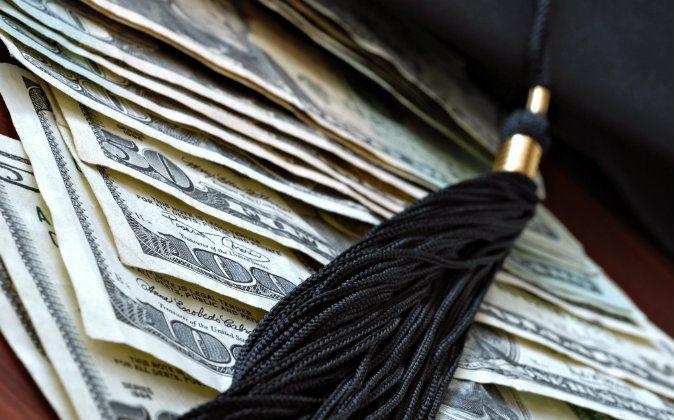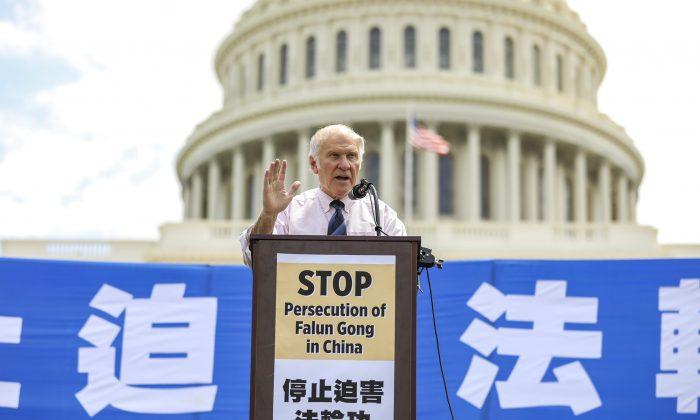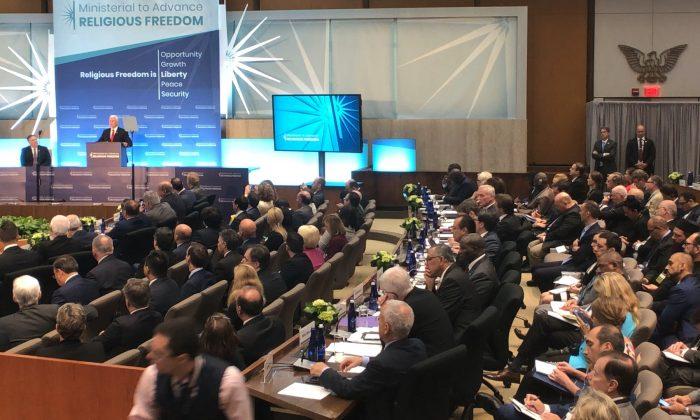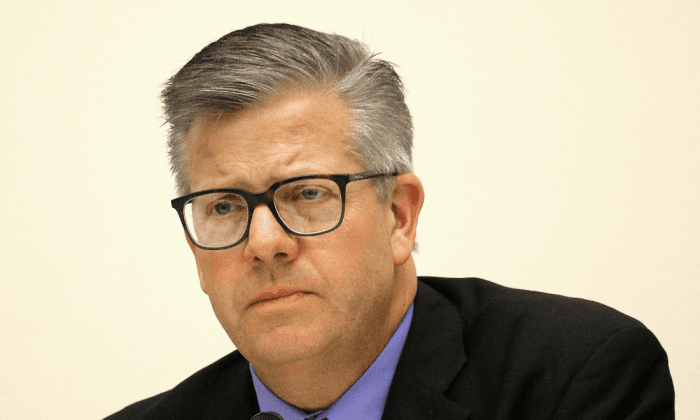WASHINGTON—The cost to go to college has soared in the last decade. At the same time, federal student aid programs in the form of grants, loans, tax credits, and work-study, have grown to $170 billion a year, compared to about $10 billion in 1970, adjusted for inflation, according to Richard Vedder, economics professor at Ohio University, in an article for the National Review.
Does the federal government’s largesse in recent decades have anything to do with the rising cost of tuition? Vedder, who is director of the Center for College Affordability and Productivity, thinks it does.
Speaking at the National Press Club’s Newsmakers conference, Sept. 10, Vedder said, “Rapidly expanding federal student financial assistance programs have pushed up student prices.”
It’s not a new idea that the availability of more assistance acts as an incentive to raise prices, as he points out. In a policy paper of the Center, written with Christopher Denhart and Joseph Hartge, Vedder called it the “Bennett Hypothesis,” and quoted the former Education Secretary William J. Bennett, who said in 1987, “If anything, increases in financial aid in recent years have enabled colleges and universities to raise their tuitions.”
Indeed, tuition fees rose beyond the inflation rate of about 1 percent from 1939-78 annually, using some guess work because the federal government did not publish annual tuition fee increase data before 1978, according to the Center’s policy paper. Since 1978, during the same time that federal financial assistance programs were expanding, the annual tuition increases have been 3 to 4 percent beyond the inflation rate.

However, a correlation between increases in federal assistance and tuition increases does not prove causation, acknowledges Vedder, who tried to rule out other likely explanations. For example, some say that colleges and universities were forced to raise fees in the last decade because state subsidies for education declined considerably with the Great Recession, beginning in late 2007. But Vedder noted that private universities, which don’t receive state subsidies, also made equivalent tuition increases.
Gaming the System
Vedder contends that the college and university administrators are “gaming the financial aid system,” using the added revenues to finance an “academic arms race,” to spend more and more on items of questionable utility. Colleges have vastly increased their staffs, particularly administrative personnel; relative to enrollments the number has roughly doubled since the 1970s, according to the Center’s policy paper. Vedder said at the news conference, “The number of college administrators often exceeds the number of faculty, broadly defined.”
Moreover, “facilities have become more luxurious, including fancy recreation centers and posh housing complexes. Subsidies of intercollegiate athletics have risen,” states the Center’s paper. Vedder said, disapprovingly, that the added tuition fees are used for reducing faculty teaching loads so faculty can write research papers, and the fees are to pay seven-digit compensation for some university presidents.
New Incentives
Vedder received some ammunition for his hypothesis from a Wall Street Journal editorial that appeared on the same day as the Newsmaker conference. It lambasted the Obama administration’s Public Service Loan Forgiveness (PSLF) program, which forgives the loan after 10 years for those who select one of the public service professions that qualify—government or nonprofit jobs. Based on federal government estimates, a quarter of all jobs qualify.
Once the student figures out how much he or she will have to repay, there is an incentive to borrow more, knowing that the amount will be forgiven. There’s also an incentive for institutions to charge higher tuitions, especially for certain programs such as healthcare, social work, education, and government.
Assistance Program Failures
As a result of the federal aid programs, enrollments have increased, enabling people who otherwise couldn’t afford to go to college to attend. But that success is highly problematic, says Vedder, who argues that society is worse off due to high student loan debt and underemployment and unemployment.
Vedder contends that we have too many persons in higher education and it has had negative consequences. In the National Review article cited above he states that the Bureau of Labor Statistics “suggest that almost half of the nation’s college graduates are in jobs that do not require a bachelor degree.”
Douglas Belkin cited research in WSJ, Sept. 4, from the New York Federal Reserve Bank that found that approximately a quarter of employed college graduates are “earning barely more than those with only a high school diploma.” No question that a college degree on average is a big boost to income, but not for the lowest earning quarter of the college graduates who make $27,000 or less.
Another issue is that student loan debt has grown exponentially over the last decade. The compound annual growth rate from 2003 to 2013 is 15.6 percent, compared to auto and mortgage annual increases of 2.1 and 3.6 percent, respectively, states the Center’s policy paper.
Student loan debt, now at $1.2 trillion, has surpassed credit card, auto, and home equity loan debt.
Finally, Vedder said that the main purpose of the assistance programs—to equalize education opportunity and increase the proportion of degreed students from the lower-income population—has largely failed.
In 1970, the bottom family income quartile accounted for 12 percent of the total bachelor’s degrees by age 24, according to data from Postsecondary Education Opportunity. In 2010, the lower quartile income families received 9.4 percent. Thus, the proportion of bachelor’s degrees earned by the lower-income students has declined in the past 40 years despite the added financial assistance.
According to other experts, Vedder’s generalization about the failure of federal student aid for equalizing opportunity for the poor student overlooks a more direct cause, namely, the inequitable circumstances facing lower-income students.
Professor William Elliott III, director of the Assets and Education Initiative at the University of Kansas, concluded in his research that even high-achieving low-income students are steered into schools that spend less per student on instruction, have lower graduation rates, and yield poorer labor market returns than more competitive institutions. He says the research suggests that there exists two tiers of higher education and that students fall into one or the other, based more on socioeconomic status than innate ability.
“Higher education cannot be an equalizing force if it delivers an unequal product…” Elliott said, “More than half of community college students fail to complete a degree, receive a certificate, or transfer to a four-year institution within six years, considerably poorer interim outcomes than students at more selective, four-year institutions.”
*Image of a graduation cap and money via Shutterstock





Friends Read Free